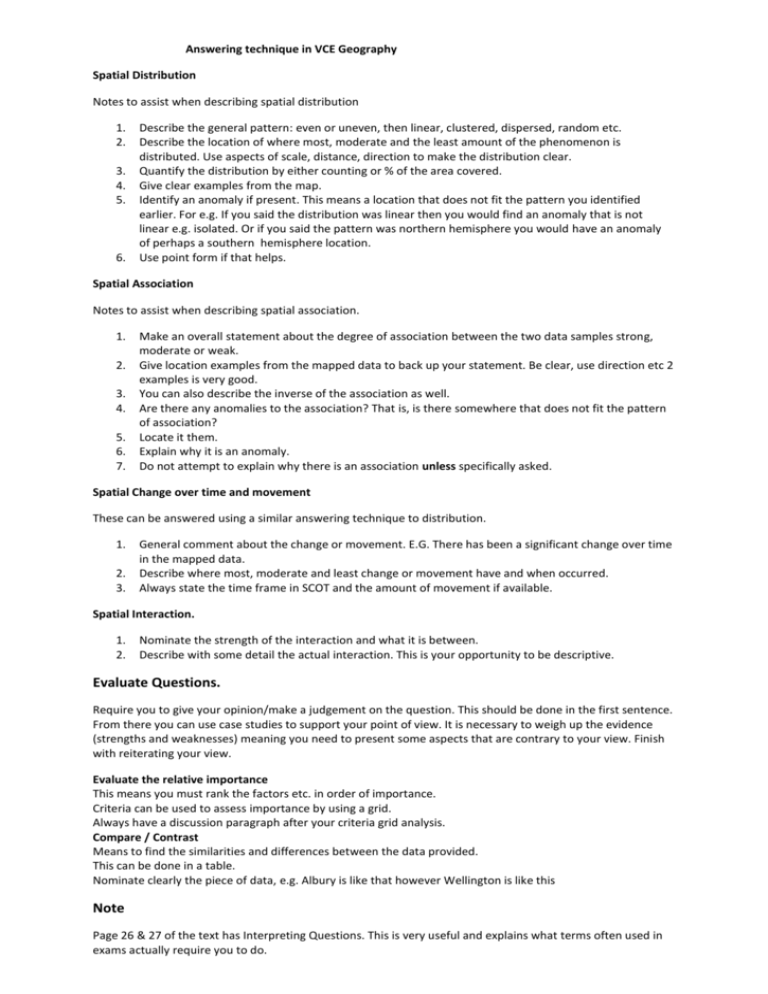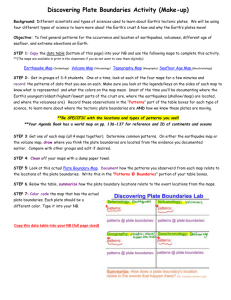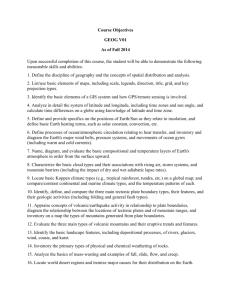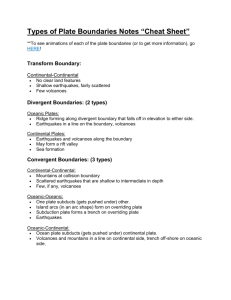Answering technique in VCE Geography
advertisement

Answering technique in VCE Geography Spatial Distribution Notes to assist when describing spatial distribution 1. 2. 3. 4. 5. 6. Describe the general pattern: even or uneven, then linear, clustered, dispersed, random etc. Describe the location of where most, moderate and the least amount of the phenomenon is distributed. Use aspects of scale, distance, direction to make the distribution clear. Quantify the distribution by either counting or % of the area covered. Give clear examples from the map. Identify an anomaly if present. This means a location that does not fit the pattern you identified earlier. For e.g. If you said the distribution was linear then you would find an anomaly that is not linear e.g. isolated. Or if you said the pattern was northern hemisphere you would have an anomaly of perhaps a southern hemisphere location. Use point form if that helps. Spatial Association Notes to assist when describing spatial association. 1. 2. 3. 4. 5. 6. 7. Make an overall statement about the degree of association between the two data samples strong, moderate or weak. Give location examples from the mapped data to back up your statement. Be clear, use direction etc 2 examples is very good. You can also describe the inverse of the association as well. Are there any anomalies to the association? That is, is there somewhere that does not fit the pattern of association? Locate it them. Explain why it is an anomaly. Do not attempt to explain why there is an association unless specifically asked. Spatial Change over time and movement These can be answered using a similar answering technique to distribution. 1. 2. 3. General comment about the change or movement. E.G. There has been a significant change over time in the mapped data. Describe where most, moderate and least change or movement have and when occurred. Always state the time frame in SCOT and the amount of movement if available. Spatial Interaction. 1. 2. Nominate the strength of the interaction and what it is between. Describe with some detail the actual interaction. This is your opportunity to be descriptive. Evaluate Questions. Require you to give your opinion/make a judgement on the question. This should be done in the first sentence. From there you can use case studies to support your point of view. It is necessary to weigh up the evidence (strengths and weaknesses) meaning you need to present some aspects that are contrary to your view. Finish with reiterating your view. Evaluate the relative importance This means you must rank the factors etc. in order of importance. Criteria can be used to assess importance by using a grid. Always have a discussion paragraph after your criteria grid analysis. Compare / Contrast Means to find the similarities and differences between the data provided. This can be done in a table. Nominate clearly the piece of data, e.g. Albury is like that however Wellington is like this Note Page 26 & 27 of the text has Interpreting Questions. This is very useful and explains what terms often used in exams actually require you to do. Example of an answer to answer Task 2 (1). Describe the spatial distribution of volcanoes in the world. 1. The general pattern of active volcanoes is widespread but unevenly concentrated in specific locations. They are generally distributed in a linear pattern clustered around the Pacific tectonic plate, the Australian plate through Indonesia and the African plate around north east Africa. There are random volcanoes not on plate boundaries dispersed throughout the world. 2. Volcanoes are most likely to occur along the margins/boundaries of tectonic plates. The most volcanoes (approx. 70% of all active volcanoes) are around the Pacific plate also known as the ‘Ring of Fire’. This occurrence is global and more than half of the known active volcanoes are in the northern hemisphere. 3. There are 840 known active volcanoes in the world over all tectonic plates. 4. An example would Mount Krakatoa which is an active volcanic island between the main islands of Java and Sumatra in Indonesia. It is famous for having the most violent eruption in recorded history in August 1883. Another example would be Mount Fuji which is one of 108 active volcanoes in Japan and the largest mountain in Japan. It has not erupted for approx. 300 years and could erupt anytime as this is way overdue based on history. 5. There are anomalies in this description. The most obvious one is the Hawaiian Islands which is located in the middle of the Pacific tectonic plate. It is known as a hot spot in the plate. It is not linear as the distribution of most active volcanoes but a random phenomena caused by a weakness in the middle of the plate. Example of an answer to Task 3 (1). Describe the spatial association between mountain ranges and plate boundries. 1. There is a strong spatial association between mountain ranges and plate boundaries. 2. The Himalayans mountain range is in the northern hemisphere approx. 80 Degrees East Longitude and is located on the boundary of the Indian and Eurasian tectonic plates. The plate boundaries are both continental and are converging roughly north / south on each other and have formed the mountain range. Another example of this is the Andes Mountain range located on the west coast of South America on the coast of Peru and Chile. The Andes are located on the tectonic plate boundaries of the South American plate and the Nazca plate. The plate boundaries are continental to oceanic and are converging east / west on each other and have formed the Andes mountain range. 3. There are anomalies. An anomaly in this spatial association is the San Andreas fault line that is on the tectonic plate boundaries of the Pacific plate and the North American plate. There is no mountain range on these plate boundaries.








